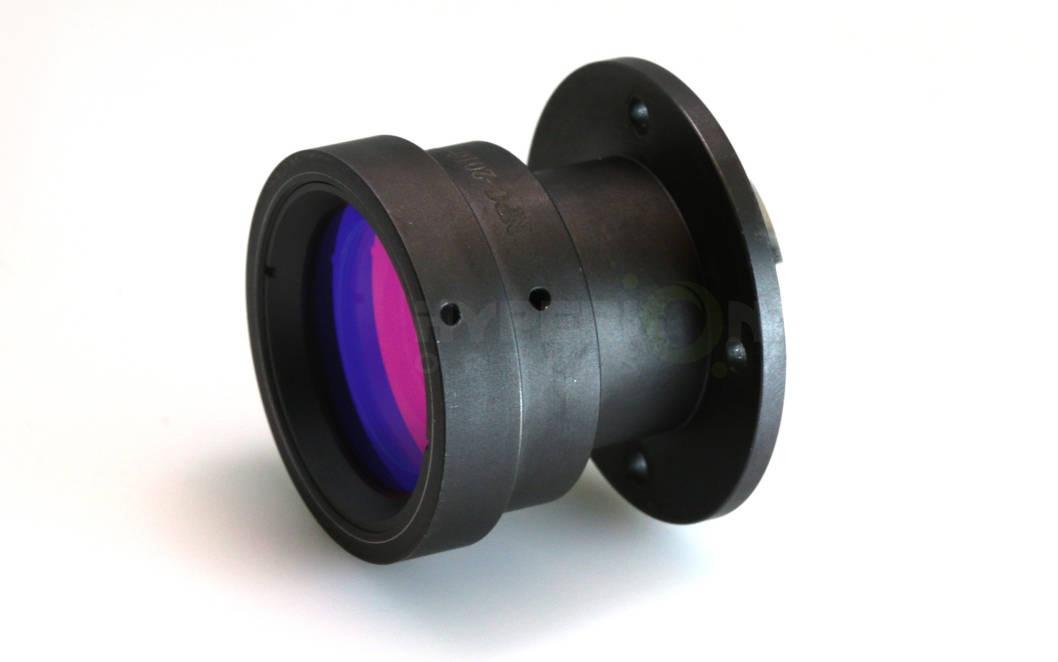
Hyperion Optics offers economical custom design collimating lenses that can effectively correct
spherical and chromatic aberrations, including singlet and chromatic lenses. Many
of our clients had experiences where off-the-shelf collimators they purchased
for their system do not collimate the light source perfectly, thus affecting
the final system performance. To better serve clients with similar challenges
when building a cost-effective system, Hyperion Optics provides free design
consultation for custom collimators in both singlet and chromatic formats.
Hyperion's custom collimator lenses help parallelize the entrance light rays into your optical system setup, enabling you to control the field of view, collection efficiency, and spatial resolution. Our existing collimator design is responsive at UV-VIS, or VIS-NIR spectrum.
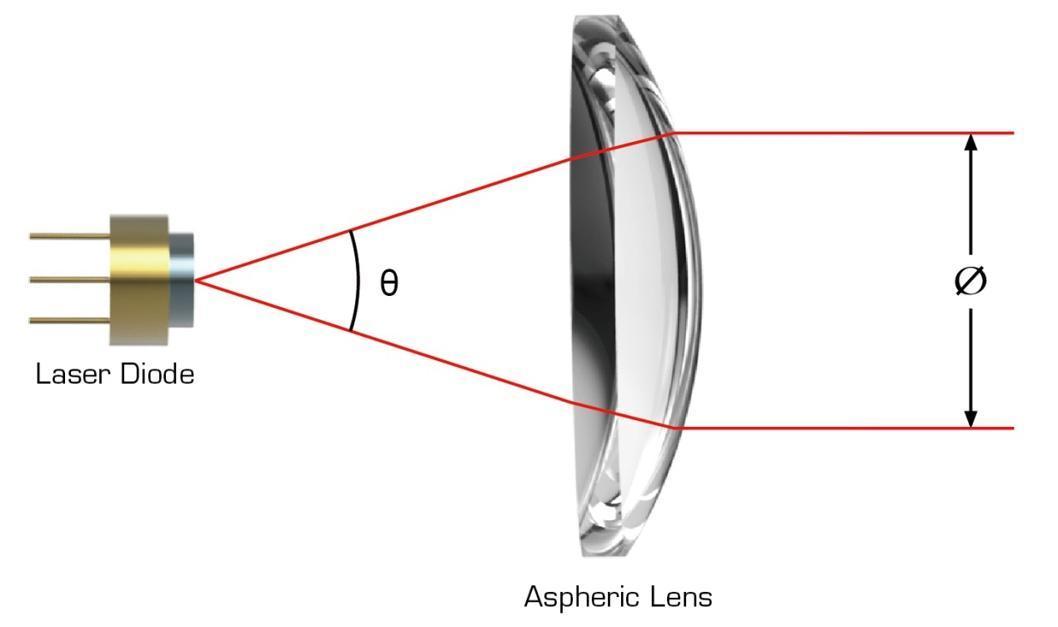

Aspherical collimator lens is another hot product that we offer as a cost-effective replacement for volume production. Unfortunately, brand-name aspherical lenses are not the most budget-friendly. Hyperion Optics provides reverse engineering services to help you maintain a competitive edge in the global market, oftentimes with even better system performance since our redesign aimed at optimizing the aspherical lens for your specific application. Please refer to our reverse engineering and aspherical surface production pages for more information.
To start with your customized collimating lens design, please verify the expected spot size and focal length of your setup:
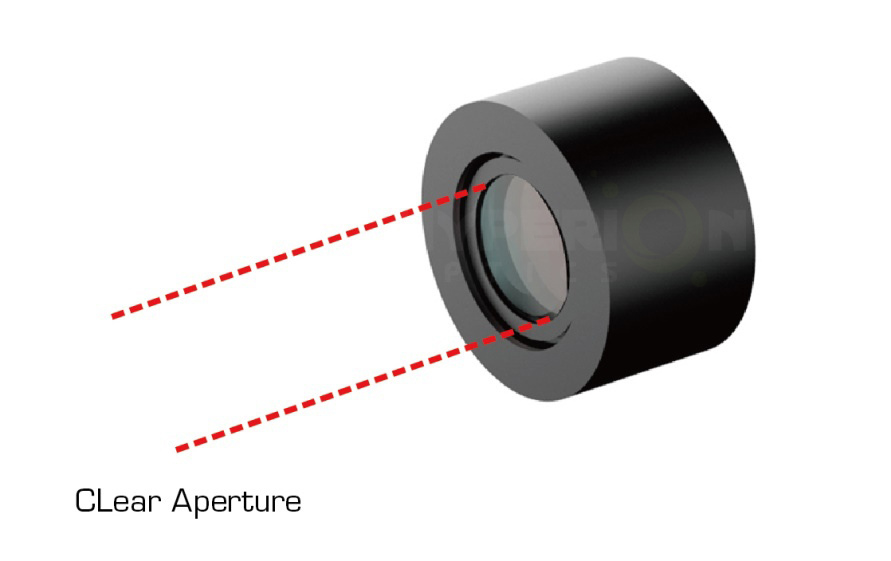
For a point source, near collimation can be assumed so that the beam will be the “clear” aperture of the laser collimating lens. If a fiber is attached to the collimation lens, the divergence angle can be calculated depending on the height of the thread. This information allows you to calculate the spot size at a distance.
Tan(Theta) = (Height of fiber)/(Focal Length)
Focal Length = Height of fiber = (1/2)*core diameter
Theta = divergence angle
Should I choose a chromatic or singlet collimator lens?
For applications such as absolute irradiance, the use of achromatic lenses can offer the maximum benefits. An achromatic lens helps to eliminate the unexpected “contamination” of the spectrum caused by wavelengths outside of the optimal FOV.
Further, Hyperion Optics offers free consultation on your mechanical design, including lens mount, barrel, and assembly housing. Contact our technical sales team today to find out the best collimating solution for your optical system.
The collimating lens can transform the optical transmission of an optical fiber into a quasi-direct light (parallel light), or parallel (approximate parallel) light to a single mode fiber.
The collimating lenses of the reflector and transmission types are used in the beam transmission system to maintain the quasi-straightness of the beam between the laser resonator and the focusing optical element. The reflection type collimating lens is used in a copper full mirror, while the collimating lens of transmission type is used In zinc selenide lens.
The collimating lens is a common convex lens, where the diverging light enters, and the parallel light emits, and this convex lens acts as a straight line.
1. The lens (mirror) with the appropriate focal length will be selected according to the required girdle radius of the small divergence Angle. The spot is basically the same size as it needs to be.
2. If the collimation lens refers to the alignment of the light, and adjusts the light path, then the near mirror frame is used to adjust the near field aperture and the far mirror frame is used to adjust the far field aperture. If there is a lens focusing, we should think about the relationship of the near field and far field imaging, otherwise, it will be further off.
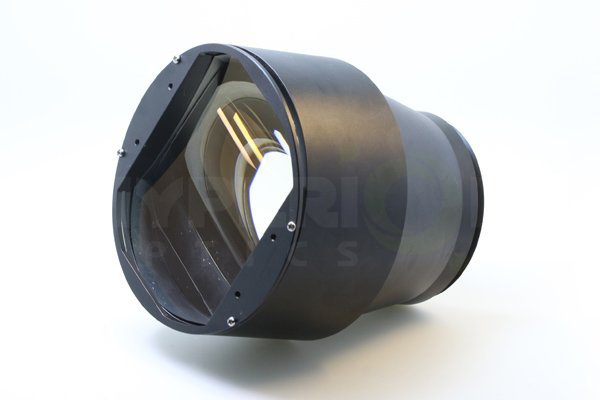
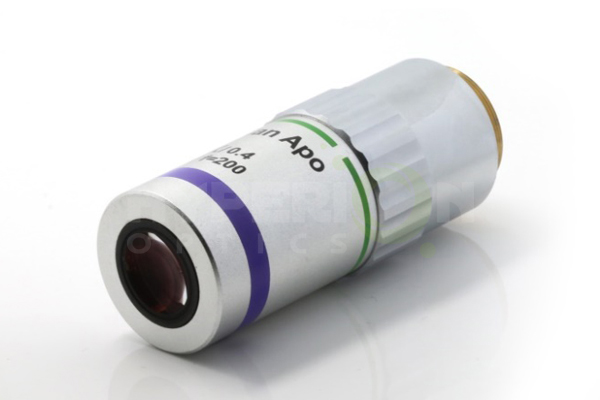
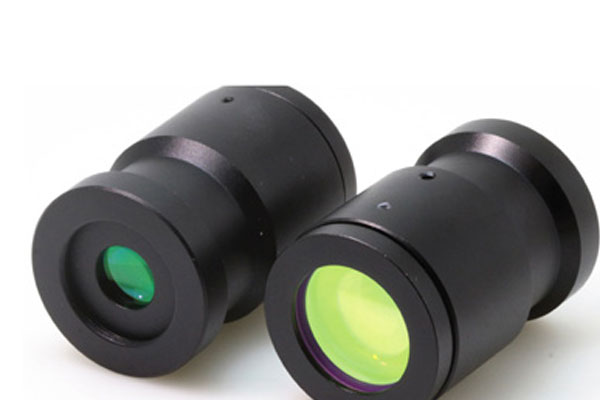
 Call us on:
Call us on:  Email us:
Email us:  9B-4F, No.1 Qingnian Road Liando U Valley,Yuhua International Wisdom Valley, Nanjing, 210039 China
9B-4F, No.1 Qingnian Road Liando U Valley,Yuhua International Wisdom Valley, Nanjing, 210039 China 








 English
English  cn
cn  de
de  es
es  fr
fr 


